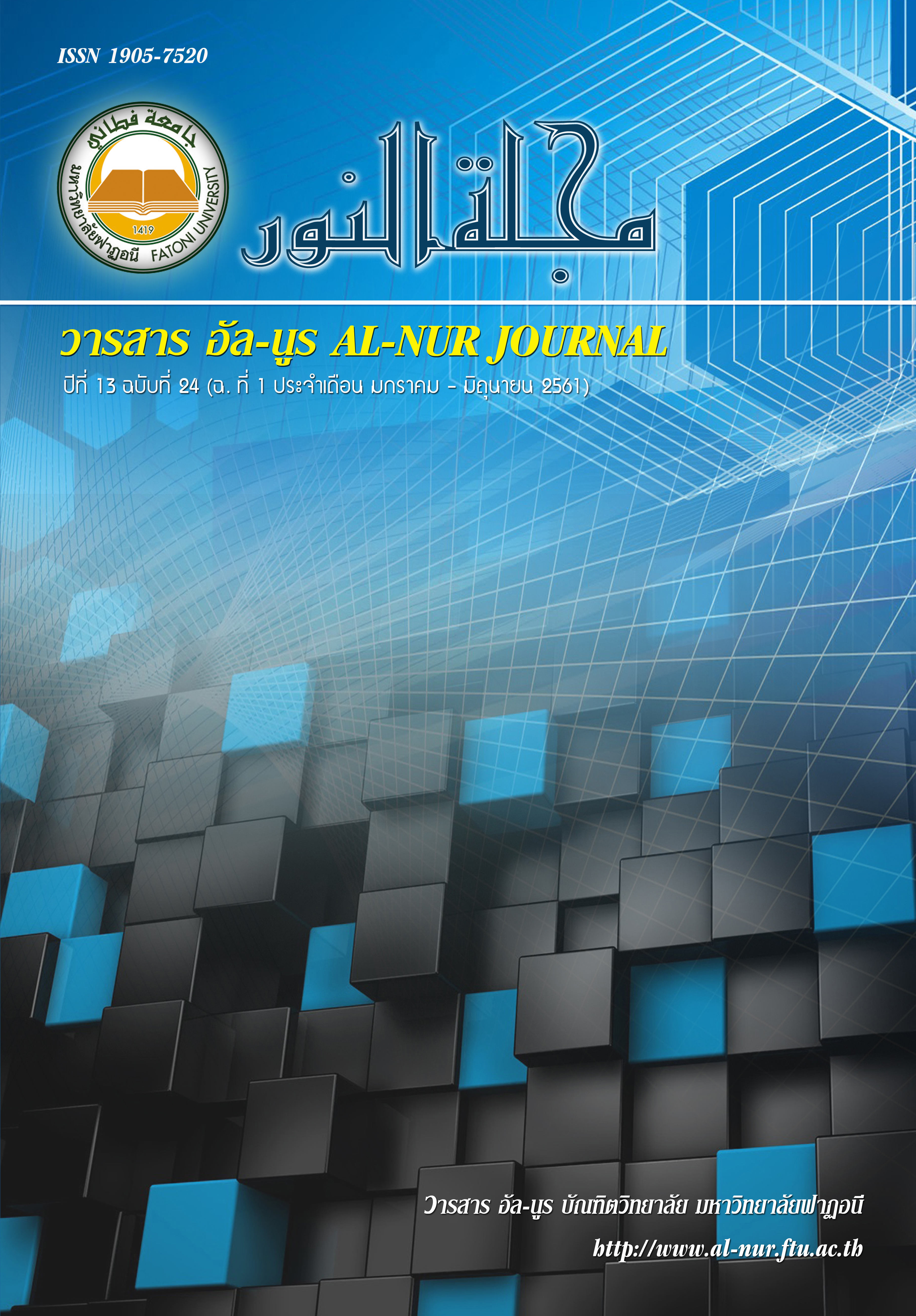Equity in Human Resource Management of Medical Technologists A Case Study of Public and Private Hospitals in Songkhla Province
Keywords:
Equity, Medical Technologist, Human Resource ManagementAbstract
This descriptive research aims to investigate the equity in human resource management of medical technologists in each role, status, organization, and to explore the need for equity in human resource management of medical technologists in Songkhla Province. Data was collected from a sample group of medical technologists (106 out of 168). A survey questionnaire was used as a data mining tool and was proved by professionals and its reliability was 0.86.
From the study, we found that the group of bachelor’s degree medical technologists (in the age range between 22 to 31 years) with work experience between 1 to 10 years and the average salary between 10,000–20,000 bath had significantly different perspectives of need for equity in salary rates, welfare, and career stability compared to other groups. We also found that the group of medical technologists who work at the practitioner level from government hospitals seem to have significantly different perspective on the career stability while those from tertiary hospitals tend to have significantly different perspective toward salary rates.
Data shows that most of the medical technologists prefer to have equity in every aspect and those who work in private hospitals demand more respect than those who work in public hospitals. We believe that the Association of Medical Technologist of Thailand should cooperate with every hospital in order to set a new standard for equity in salary rates, welfare, and respect especially for new medical technologists and those who work at the practitioner level.
References
Hoffmann, Schmidt. 1995. The role of location in medical technologist job satisfaction. Health Care Superv. 13 (3):49-53.
Marinucci, Francesco. 2013. Factors affecting job satisfaction and retention of medical laboratory professionals in seven countries of Sub-Saharan Africa. Human Resources for Health.
การพัฒนาวิชาชีพเทคนิคการแพทย์อย่างมีศักดิ์ศรีและยั่งยืน. 2557. Available from www.thaimedtechjob.com.
ชนินทร์ จักรภพโยทิน. 2554. ความคิดเห็นของบุคลากรด้านการบริหารงานบุคคลของมหาวิทยาลัยในกำกับของรัฐและพฤติกรรมการเป็นสมาชิกที่ดีขององค์กร กรณีศึกษามหาวิทยาลัยมหิดล วิทยาเขตศาลายา. วารสารวิทยบริการ มหาวิทยาลัยสงขลานครินทร์ 19 (2).
ทิตติยา สมสิบ. 2553. แรงจูงใจในการทำงานของพนักงานขายทางโทรศัพท์ของบริษัทประกันชีวิตในกรุงเทพมหานคร, บริหารธุรกิจ, มหาวิทยาลัยเชียงใหม่, เชียงใหม่.
ธัญวรรณ ตันตินาคม. 2550. การเปรียบเทียบการรับรู้ความยุติธรรมในองค์การ และความพึงพอใจในงานระหว่างพนักงานบริษัทเอกชนที่มีระดับพฤติกรรมการเป็นสมาชิกที่ดีขององค์การแตกต่างกัน, มหาวิทยาลัยเชียงใหม่, เชียงใหม่.
นงลักษณ์ พะไกยะ, เพ็ญนภา หงษ์ทอง. 2554. กำลังคนด้านสุขภาพ ที่เป็นมา เป็นอยู่ และจะเป็นไป. นนทบุรี: สำนักงานวิจัยและพัฒนากำลังคนด้านสุขภาพ.
ประจวบ, เพิ่มสุวรรณ. 2553. ข้าราชการ ผู้ประกอบการและลูกจ้างอาชีพใดน่าสนใจมากกว่ากัน. Executive Journal.
ปาริชาติ ปานสำเนียง. 2556. คุณภาพชีวิตในการทำงาน และการรับรู้ความยุติธรรมในองค์กรที่มีอิทธิพลต่อพฤติกรรมการเป็นสมาชิกที่ดีต่อองค์กรผ่านความผูกพันต่อองค์กรของพนักงานมหาวิทยาลัยสายสนับสนุน กรณีศึกษาคณะแพทย์แห่งหนึ่งในกรุงเทพมหานคร. วารสารวิทยบริการ 2 (24):129-142.
พนัชกร สิมะขจรบุญ. 2554. การศึกษาค่าตอบแทนและสวัสดิการของธุรกิจโรงแรมประเภทแฟรนไชส์ กรณีศึกษา กรุงเทพมหานคร. Veridian E-Journal SU 4.
ภาวัช ศิริโยธา. 2553. ความไม่เป็นธรรมและแนวทางการจัดสวัสดิการของพนักงานราชการกรมปศุสัตว์ในเขตภาคตะวันออก, มหาวิทยาลัยบูรพา, ชลบุรี.
วรรษพร อากาศแจ้ง. 2556. ปัจจัยที่ส่งผลต่อความตั้งใจลาออกของคนเก่งในระบบราชการ. WMS Journal 0f Management 2 (2).
วิกฤติแพทย์ พยาบาลสมองไหล บาดแผลเรื้อรังที่ต้องรักษา. Available from m.thaihealth.or.th/healthcontent/featured/21948.
ศรีนวล ศิริคะรินทร์, มาลีรัตน์ อ่ำทอง. 2556. การพัฒนาเกณฑ์การจัดการกำลังคนของสหวิชาชีพ พ.ศ.2555: สำนักบริหารการสาธารณสุข สำนักปลัดกระทรวง.
สุเนตร นามโคตรศรี. 2553. คุณภาพชีวิตการทํางานของบุคลากรองค์การบริหารส่วนตําบล., มหาวิทยาลัยบูรพา, ชลบุรี.



